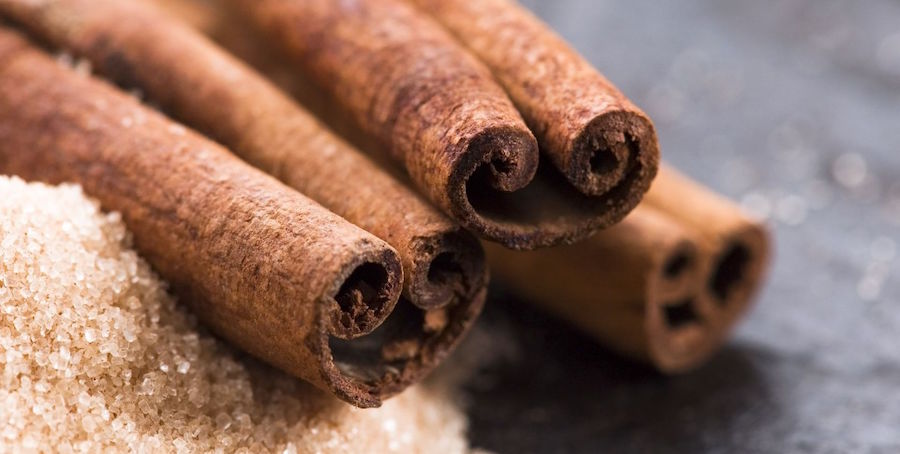Few things can ruin your day like a migraine. Once it strikes, it's hard to focus on anything else except that throbbing, incapacitating, overwhelming, pounding headache radiating throughout your head. The headache can be so debilitating that it can influence physical, mental, and social quality of life.
The bothersome symptoms (including muscle tension, neck pain, nausea, and sensitivity to light and sound) make it nearly impossible to stay focused, be productive, and perform, be it at school or on the job. The financial cost is massive. One estimate found that headaches cost nearly 17 billion dollars in medical expenses and missed worked days. [1]
Unfortunately, migraine headaches are not rare, especially in women. They are three times more prevalent in women than men. Worldwide, they are responsible for half of all disabilities caused by neurological disease. In fact, the World Health Organization (WHO) considers headache disorders to be an under-estimated, under-treated, and under-recognized problem throughout the world. [2]
However, migraines are a complex condition that can be affected by genetic, environmental, or even nutritional factors. Psychological stress, smoking, inactivity, poor sleep, hormonal swings (especially during menstrual cycles), skipping meals, and sudden changes in weather have been associated with migraines. [3-5] Recent research has also discovered a link between obesity and the frequency and intensity of migraines. [6]
Although we still have much to learn about migraines, we do understand some important factors that influence their onset, frequency, or intensity. For example, we know migraines are associated with inflammation. During a migraine, pro-inflammatory factors accumulate around nerves and blood vessels of the head. [7]
The role of food in the production and prevention of headaches has been the subject of scientific research since 1900. [8] Thankfully, research reveals many natural and nutritional ways to soothe migraines in the two best possible ways:
1) to deal with the pain of a migraine attack and
2) to possibly prevent the initial onset.
As a plus, these natural remedies may have fewer side effects than prescription medication.
Nutrition can also help. After all, the brain is a highly metabolic organ. Therefore, what we eat is likely to influence its structure, function, and health. Some of the most notable remedies include magnesium, coenzyme Q10, feverfew Tanacetum parthenium (L.), butterbur Petasites Mill., and omega-3 fatty acids.
The Migraine Soothing Strategy
Magnesium
Magnesium is a good place to start. As the fourth most abundant mineral in the body it is involved in more than 300 metabolic reactions, such as protein synthesis, cellular energy production, reproduction, but also nerve transmission, blood pressure, and glucose and insulin metabolism. [9]
There is strong evidence that magnesium deficiency is much more common in migraine sufferers than in healthy counterparts. [10] In fact, some estimate that up to half of migraine sufferers are magnesium-deficient. Lower levels of magnesium (in both red and white blood cells) are seen in those who suffer from frequent migraine headaches compared with those who do not experience migraines. [11] Some may be deficient due to poor nutrition, excessive magnesium loss due to stress, or they may have a genetic inability to absorb magnesium properly. [10]
A slight decrease in migraine frequency was observed in subjects undergoing magnesium supplementation in two early, placebo-controlled clinical trials. [12,13]
Magnesium may help maintain healthy blood vessels and normal nerve transmissions. Magnesium is found in various plant and animal sources. Since magnesium is part of chlorophyll (a green plant pigment), green leafy vegetables such as spinach are a great source of magnesium. [14] Other good sources include whole grains, legumes, nuts (such as almonds and cashews), and seeds. [15]
Grains lose a significant amount of their magnesium content when refined by most types of food processing that remove the nutrient-rich germ and bran. Choose whole grains such as brown rice or oatmeal.
Omega-3 Fatty Acids
Since migraines are associated with inflammation, anti-inflammatory nutrients may help offset the inflammatory process. [7] In fact, two major anti-inflammatory nutrients—EPA and DHA (two types of omega-3 fatty acids)—have shown evidence of reducing the effects of migraine headaches. [16] Conversely, a lower intake of these long-chain omega-3 fatty acids is associated with a higher frequency of migraine attacks. [17] Consuming fish oil or cold water fatty fish with a high content of omega-3 fatty acids, such as salmon, trout, mackerel, herring or tuna, may be useful. [18]
A healthy goal can be at least two eight-ounce fish meals a week to supply about the same amount of EPA as used in many of the studies examining the migraine-soothing effects of omega-3 fatty acids.
Feverfew T. parthenium
This herb is a medicinal plant with a long history of use in traditional medicine for migraine headaches, fevers, rheumatoid arthritis, stomachaches, and many other health conditions. When it comes to migraine headaches, this herb may block the release of chemicals that dilate blood vessels (also known as “vasodilators”) in the brain. [19]
Feverfew is taken as freeze-dried capsules (which usually come in a daily dose of 250 mg), tablets, fresh leaves, or herbal tea.
Butterbur Petasites Mill.
Many people experiment with herbal extracts of butterbur root. The active ingredient here is S-petasin. S-petasin may prevent the release of certain compounds from starting the inflammatory process that brings about the dreaded migraine. [20]
If buying butterbur Petasites, choose extracts free of pyrrolizidine alkaloids (PAs) since they are toxic to the liver. It is for this reason that raw, unprocessed butterbur is avoided. Still, even non-PA butterbur extracts are used short-term and in recommended doses.
Coenzyme Q10
Studies show CoQ10 is efficient and can be one of the most well-tolerated ways to potentially reduce the frequency of migraine attacks as well as nausea associated with them. [21] The data presented in some studies show that CoQ10 can start to work after about one month of use. [22]
Coenzyme Q10 is involved in the formation of the cell's major energy source – ATP. It also functions as an antioxidant. Although found in food sources, such as meat, whole grains, and oily fish, supplementation may be useful for some.
B Vitamins (Especially Riboflavin)
Finally, vitamin B2 (or riboflavin) may be helpful since it improves energy production in the cells that make up blood vessels. Although it doesn't help reduce the pain or duration of a headache, it does show evidence of reducing the number of migraine headaches. [23]
Putting it All Together
As you can see, there are multiple routes to soothing migraines. Your personal plan may be as simple as keeping a diary of certain food triggers and then avoiding them. Those who try the above strategies usually use them individually and for a reasonable amount of time before experiencing a change or benefit.
The benefits of these natural remedies are that they have lower risk of serious side effects, are less costly, and may even be more effective.
Other approaches to easing migraine headaches include regular aerobic exercise, resting in a dark, quiet room, self-massaging with rosemary Rosmarinus officinalis (L.), lavender Lavandula angustifolia (Mill.), eucalyptus Eucalyptus globulus (Labill.) or peppermint oil Mentha ×piperita (L.), and practicing healthy sleep habits. [24-30]
One of the most practical ways to fight migraine headaches daily is to keep blood sugar levels stable. When blood sugar levels drop, the brain is one of the first organs to be affected. [31-34] "Dips" and "peaks" can trigger migraines by stimulating the release of certain inflammatory messengers. Regular, evenly distributed meals with slow-release carbohydrates, high-quality protein, and anti-inflammatory nutrients are essential for maintaining stable blood glucose levels.
An important reminder: It is always a good idea to consult your doctor before beginning any program of supplements or making changes to your diet or lifestyle.
This article is for informational purposes only. It is not intended to treat, diagnose, cure, or prevent disease. This article has not been reviewed by the FDA. Always consult with your primary care physician or naturopathic doctor before making any significant changes to your health and wellness routine.
Disclosure of Material Connection: I am a guest blogger for American College of Healthcare Sciences, the Institution that publishes this blog. However, all opinions are my own. This blog may contain affiliate links. I am disclosing this in accordance with the Federal Trade Commission’s 16 CFR, Part 255: “Guides Concerning the Use of Endorsements and Testimonials in Advertising.”
References
- National Headache Foundation. (2009, Aug. 21). Headaches Hurt Employees, Employers. Retrieved from www.headaches.org/2009/08/21/headaches-hurt-employees-employers/
- World Health Organization. (2016, April). Headache disorders. Retrieved from http://www.who.int/mediacentre/factsheets/fs277/en/
- Kelman, L. (2007). The triggers or precipitants of the acute migraine attack. Cephalalgia, 27(5), 394-402. doi: 10.1111/j.1468-2982.2007.01303.x
- Hoffmann, J., Lo, H., Neeb, L., Martus, P., & Reuter, U. (2011). Weather sensitivity in migraineurs. Journal of Neurology, 258(4), 596-602. doi: 10.1007/s00415-010-5798-7
- Kimoto, K., Aiba, S., Takashima, R., Suzuki, K., Takekawa, H., Watanabe, Y., ...Hirata, K. (2011). Influence of barometric pressure in patients with migraine headache. Internal Medicine, 50(18), 1923-8. doi: http://doi.org/10.2169/internalmedicine.50.5640
- Bigal, M.E. & Rapoport, A.M. (2012). Obesity and chronic daily headache. Current Pain and Headache Reports, 16(1), 101-9. doi: 10.1007/s11916-011-0232-0.
- Steiner, T.J., Paemeleire, K., Jensen, R., Valade, D., Savi, L., Lainez, M.J. ... & World Health Organization. (2007). European principles of management of common headache disorders in primary care. The Journal of Headache and Pain, 8(2), S26-9. doi: 10.1007/s10194-007-0366-y
- Saracco, M.G., Calabrese, G., Cavallini, M., Montano, V., Rinaldi, B., Valfrè, W., & Aguggia, M. (2014). Relationship between primary headache and nutrition: a questionnaire about dietary habits of patients with headache. Neurological Sciences, 35(Suppl 1), 159-61. doi: 10.1007/s10072-014-1760-2
- Volpe, S.L. (2013). Magnesium in disease prevention and overall health. Advances in Nutrition, 4(3), 278S-83S. doi: 10.3945/an.112.003483
- Mauskop, A. & Varughese, J. (2012). Why all migraine patients should be treated with magnesium. Journal of Neural Transmission 119(5), 575-9. doi: 10.1007/s00702-012-0790-2
- Mauskop, A. & Altura, B.M. (1998). Role of magnesium in the pathogenesis and treatment of migraines. Clinical Neuroscience 5(1), 24-27. Retrieved from https://www.ncbi.nlm.nih.gov/pubmed/9523054
- Peikert, A., Wilimzig, C. & Köhne-Volland, R. (1996). Prophylaxis of migraine with oral magnesium: results from a prospective, multi-center, placebo-controlled and double-blind randomized study. Cephalalgia 16(4), 257-63. doi: 10.1046/j.1468-2982.1996.1604257.x
- Sun-Edelstein, C. & Mauskop, A. (2009). Role of magnesium in the pathogenesis and treatment of migraine. Expert Review of Neurotherapeutics 9(3), 369-79. doi: 10.1586/14737175.9.3.369
- Bohn, T., Walczyk, T., Leisibach, S. & Hurrell, R.F. (2004). Chlorophyll-bound Magnesium in Commonly Consumed Vegetables and Fruits: Relevance to Magnesium Nutrition. Journal of Food Science 69(9), S347-S350. doi: 10.1111/j.1365-2621.2004.tb09947.x
- National Institutes of Health: Office of Dietary Supplements. (2016, Feb. 11). Magnesium: Fact sheet for health professionals. Retrieved from https://ods.od.nih.gov/factsheets/Magnesium-HealthProfessional/
- Wagner, W. & Nootbaar-Wagner, U. (1997). Prophylactic treatment of migraine with gamma-linolenic and alpha-linolenic acids.Cephalalgia, 17(2), 127-30. doi: 10.1046/j.1468-2982.1997.1702127.x
- Sadeghi, O., Maghsoudi, Z., Khorvash, F., Ghiasvand, R., & Askari, G. (2015). The relationship between different fatty acids intake and frequency of migraine attacks. Iranian Journal of Nursing and Midwifery Research, 20(3), 334–339. Retrieved from https://www.ncbi.nlm.nih.gov/pmc/articles/PMC4462058/
- National Headache Foundation. (2007, Oct. 25). Fish oil. Retrieved from http://www.headaches.org/2007/10/25/fish-oils/
- Pareek, A., Suthar, M., Rathore, G.S. & Bansal, V. (2011). Feverfew (Tanacetum parthenium L.): A systematic review. Pharmacognosy Review, 5(9), 103-110. doi: 10.4103/0973-7847.79105
- Slavin, M., Bourguignon, J., Jackson, K & Orciga, M. (2016). Impact of Food Components on in vitro Calcitonin Gene-Related Peptide Secretion—A Potential Mechanism for Dietary Influence on Migraine. Nutrients 8(7), 406. doi: 10.3390/nu8070406
- Sándor, P.S., Di Clemente, L., Coppola, G., Saenger, U., Fumal, A., Magis, D., ...& Schoenen, J. (2005) Efficacy of coenzyme Q10 in migraine prophylaxis: a randomized controlled trial. Neurology, 64(4), 713-5. doi: 10.1212/01.WNL.0000151975.03598.ED
- Hershey, A.D., Powers, S.W., Vockell, A.L., Lecates, S.L., Ellinor, P.L., Segers, A., ...& Kabbouche, M.A. (2007). Coenzyme Q10 deficiency and response to supplementation in pediatric and adolescent migraine. Headache, 47(1), 73-80. doi: 10.1111/j.1526-4610.2007.00652.x
- Boehnke, C., Reuter, U., Flach, U., Schuh-Hofer, S., Einhäupl, K.M., & Arnold, G. (2004). High-dose riboflavin treatment is efficacious in migraine prophylaxis: an open study in a tertiary care centre. European Journal of Neurology, 11(7), 475-7. doi: 10.1111/j.1468-1331.2004.00813.x
- Lockett, D.M. & Campbell, J.F. (1992). The effects of aerobic exercise on migraine. Headache, 32(1), 50-4. Retrieved from https://www.ncbi.nlm.nih.gov/pubmed/1555933
- University of Maryland Medical Center. (2015, Sept. 29). Migraine headache. Retrieved from http://www.umm.edu/health/medical/altmed/condition/migraine-headache
- Sasannejad, P., Saeedi, M., Shoeibi, A., Gorji, A., Abbasi, M., & Foroughipour, M. (2012). Lavender essential oil in the treatment of migraine headache: a placebo-controlled clinical trial. European Neurology, 67(5), 288-91. doi: 10.1159/000335249
- Göbel, H., Schmidt, G., Dworschak, M., Stolze, H., & Heuss, D. (1995). Essential plant oils and headache mechanisms. Phytomedicine, 2(2), 93-102. doi: 10.1016/S0944-7113(11)80053-X
- Göbel, H., Fresenius, J., Heinze, A., Dworschak, M., & Soyka, D. (1996). [Effectiveness of Oleum menthae piperitae and paracetamol in therapy of headache of the tension type]. Der Nervenarzt, 67(8), 672-81. Retrieved from https://www.ncbi.nlm.nih.gov/pubmed/8805113
- Solhi, H., Salehi, B., Alimoradian, A., Pazouki, S., Taghizadeh, M., Saleh, A. M., & Kazemifar, A. M. (2013). Beneficial Effects of Rosmarinus Officinalis for Treatment of Opium Withdrawal Syndrome during Addiction Treatment Programs: A Clinical Trial. Addiction & Health 5(3-4), 90–94. Retrieved from https://www.ncbi.nlm.nih.gov/pmc/articles/PMC3905473/
- Rains, J. (2016, Dec. 16). Sleep disorders and headache. Retrieved from https://americanmigrainefoundation.org/understanding-migraine/sleep/
- The Migraine Trust. (2017). Hypoglycaemia. Retrieved from https://www.migrainetrust.org/about-migraine/trigger-factors/hypoglycaemia/
- Migraine Action. (2017). Keeping blood sugar levels stable. Retrieved from http://www.migraine.org.uk/information/factsheets/keeping-blood-sugar-levels-stable/
- Jacome, D.E. (2001). Hypoglycemia rebound migraine. Headache, 41(9), 895-8. Retrieved from https://www.ncbi.nlm.nih.gov/pubmed/11703478
- Cleveland Clinic Wellness Team. (2014, Dec. 22). 4 Natural, Drug-Free Ways to Fight Your Migraine Headaches. Retrieved from https://health.clevelandclinic.org/2014/12/4-natural-drug-free-ways-to-fight-your-migraine-headaches/






